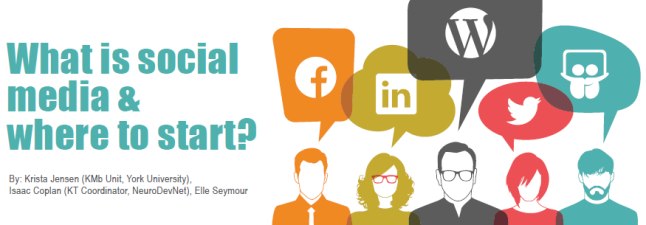This week’s guest post comes from York University’s ResearchImpact Blog, MobilizeThis! It was first published on April 22, 2016 and is reposted here with permission.
by: David Phipps, KT Lead, NeuroDevNet
Last updated in 2013 (so not new, but new to me), DFID UK has produced a guide to aid in research uptake. This guide helps researchers work with stakeholders to maximize the opportunities for research to be taken up and used by organizations making new products, developing policies and/or delivering services. Using this guide will help facilitate stakeholder engagement to enable research uptake.
Le ministère du Développement international du Royaume-Uni, le DFID, a mis à jour en 2013 (pas franchement nouveau, mais pour moi, oui) un guide pour faciliter l’exploitation des travaux de recherche. Ce guide aide les chercheurs à collaborer avec les intervenants, dans le but de maximiser les occasions d’utiliser la recherche dans la fabrication de nouveaux produits, l’élaboration de politiques ou la prestation de services. Grâce à ce guide, on aura plus de facilité à convaincre les intervenants d’exploiter activement les résultats de la recherche.
We all know (or we all should know) it is important to engage end users (especially lived experience) upstream in the research program. How else do you know your research is going to help meet the needs of people who can benefit from the policies, products and services that are enabled by your research?
The private sector calls this consumer driven design.
Communicators always advocate knowing your audience.
Knowledge mobilizers call this stakeholder engagement.
There is literature on stakeholder engagement (see KMb journal club post). There are methods like the policy dialogue (see another KMb journal club post). Jonathan Weiss (CIHR Chair in Autism Spectrum Disorders Treatment and Care Research, York University) embeds stakeholder engagement in the work of his Chair and reports annually on his efforts (see his 2014 Annual Report as an example).
But where is the help to help the rest of us?
A researcher in the NeuroDevNet network recently forwarded a guide for research uptake. Research uptake is that moment when a non-academic research partner seeks to take the results of the research in house to inform decisions about their own policies, products and services. This is a critical step in mediating the pathway from research to impact. And effective stakeholder engagement can facilitate this moment of uptake.
Thanks to DFID (UK Department for International Development) this guide book and checklist (yes, there is even a checklist!) are posted at: https://www.gov.uk/government/publications/research-uptake-guidance

As instructed by this guide, effective stakeholder engagement has four stages each with three or four activities described in each stage:
- Stakeholder engagement: working through informal networks and mapping out and connecting with relevant stakeholders
- Capacity building: not all non-academic research partners have the capacity to take up research evidence. Building capacity for end user uptake is an important element…but is this the job of the researcher or possibly for allied intermediary organizations?
- Communicating: synthesizing results, planning communications and publishing research results in accessible formats are all important to facilitate research uptake.
- Monitoring and Evaluation: create a logic model including indicators to measure progress at each stage, gather data and feedback results into your research and research uptake processes.
DFID provides a note on advocacy and influencing decisions in partner organizations. DFID “encourages programs to foster evidence informed discussions of research evidence and to encourage decision makers to make use of the full range if research evidence on a given topic. However, research programs should not be lobbying for particular policy changes based on their research results.”
Really? I believe research institutions need to strive for neutrality but researchers themselves are often highly invested in a particular policy position. Why else do media channels ask academic researchers to comment on government positions? While research methods strive to remove bias from the evidence, that unbiased evidence is not necessarily value free from the researcher’s perspective.
And a note to ResearchImpact-Réseau Impact Recherche universities and other institutions with a knowledge mobilization mandate…. we don’t have discipline specific stakeholders but we do have institutional stakeholders such as United Way, community associations, municipal and provincial partners, Chambers of Commerce, etc. These institutional stakeholders should be part of our own stakeholder engagement efforts.
Thanks to Anneliese Poetz, Manager KT Core, NeuroDevNet for passing this along and for writing about her own tips for stakeholder engagement on the NeuroDevNet Blog, KT Core-ner.



 A TEDx event is not an easy thing to coordinate or one that can be developed in only a few months time. You will need dedicated personnel; we have one person (JL) who is dedicated to coordinating all aspects of the day over a 12 month period, for about one day a week. Our timeline was as follows, based on our capacity:
A TEDx event is not an easy thing to coordinate or one that can be developed in only a few months time. You will need dedicated personnel; we have one person (JL) who is dedicated to coordinating all aspects of the day over a 12 month period, for about one day a week. Our timeline was as follows, based on our capacity: As you begin this goal setting and visioning process, read the guidelines to know what goals are feasible. The
As you begin this goal setting and visioning process, read the guidelines to know what goals are feasible. The  Looking for an appropriate venue, we kept in mind not only costs but accessibility for families – as well as technical requirements for our event (e.g. lighting, staging). With the depth and breadth of enthusiastic, passionate Canadian researchers, advocates and parents available, we had no difficulty finding individuals who could fit the TED requirements. Our speakers are up for the challenge, currently being coached to chiselling their passion, knowledge and experience into a tight 8 minutes. Similarly, finding partners and sponsors for the event was not a big challenge. Many organizations that shared the same vision of KT and gladly supported us, including the
Looking for an appropriate venue, we kept in mind not only costs but accessibility for families – as well as technical requirements for our event (e.g. lighting, staging). With the depth and breadth of enthusiastic, passionate Canadian researchers, advocates and parents available, we had no difficulty finding individuals who could fit the TED requirements. Our speakers are up for the challenge, currently being coached to chiselling their passion, knowledge and experience into a tight 8 minutes. Similarly, finding partners and sponsors for the event was not a big challenge. Many organizations that shared the same vision of KT and gladly supported us, including the 






 One thing that I should also mention is the power of
One thing that I should also mention is the power of 











